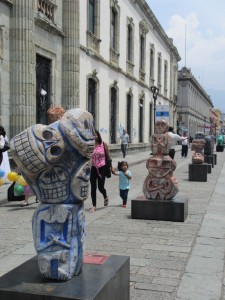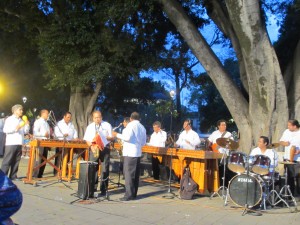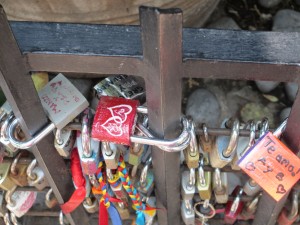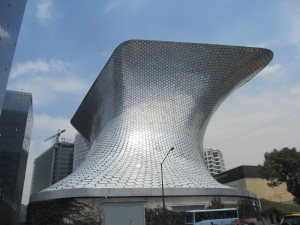By
Zachary Klein
 I know. Boston’s been flirting with record high temperatures this past week. But so what? We’re a third of the way into September and no amount of heat and humidity can shatter my cringe as winter approaches.
I know. Boston’s been flirting with record high temperatures this past week. But so what? We’re a third of the way into September and no amount of heat and humidity can shatter my cringe as winter approaches.
I remember the last one all too well: So I cling to my fast fading memories of summer. And honestly, there aren’t all that many. This wasn’t a kick-out-the-jams season since we’re in deep reno prep for a long overdue overhaul of our living space. We rent out the first floor apartment, live on the second, and have our offices on the third.
So I cling to my fast fading memories of summer. And honestly, there aren’t all that many. This wasn’t a kick-out-the-jams season since we’re in deep reno prep for a long overdue overhaul of our living space. We rent out the first floor apartment, live on the second, and have our offices on the third.
By “prep,” we’re talking about packing up everything from the kitchen, pantry, and a good chunk of the living room and hauling it to the third floor to stuff into our offices and anywhere else we can stack boxes.
Which meant no long trips but didn’t mean no fun. We took a couple of weekends to visit cousins in Western Massachusetts, who have a sweet home on Lake Buel in Monterey.
 Of course it was also wonderful to stay in Brooklyn and drive to Connecticut to visit our grandchildren, who are on the move now—crawling, pulling themselves to their feet, and making all sorts of strange sounds.
Of course it was also wonderful to stay in Brooklyn and drive to Connecticut to visit our grandchildren, who are on the move now—crawling, pulling themselves to their feet, and making all sorts of strange sounds.
Between the family visits, Sue and I continued our ongoing tour of “not particularly first rate cities”—a weekend in Portland, Maine, and, a day in Salem, Massachusetts.
Ahh, what sacrifices we make for CULTURE. Portland Museum of Art (PMA) was showing a exhibit culled from eight Maine museums called Directors’ Cut: Selections from the Maine Art Museum Trail. It was a hell of a lot easier to view the best of each museum gathered in one place than scrambling around—no matter how beautiful the roads might be. This wasn’t leaf-peeping season.
The exhibit placed images by distinctively different artists next to each other to treat us to the breadth of visions inspired by the state. For the most part it was successful, showcasing the talents of Winslow Homer, Rockwell Kent, and Andrew Wyeth alongside works by Lois Dodd, Marguerite Thompson Zorach, or Robert Indiana.
As is the case with many small city museums, Portland’s is a nice size—that is, you don’t start blurring out by the time you leave.
And there was certainly no blur when we visited the Peabody Essex Museum (PEM) in Salem to see American Epics: Thomas Hart Benton and Hollywood.
While the exhibit focused on Benton’s years in Hollywood, creating huge poster-like paintings that captured a sense of story (and were often about great movies), the show included a number of his earlier, more political paintings—some of which were surprisingly (at least to me) powerful. The man didn’t like what we did to Native Americans and abhorred slavery.
Of course you can’t visit museums without proper nourishment. Each of these two cities had a number of good restaurants, though Portland takes the prize. Rapidly becoming a real artisan, locally sourced foodie town, our favorite meal was at Fore Street.
 The atmosphere was New England coast casual, but the food was not. And people know about it. Fore was banged out for months, but if you were willing to check in at 5 p.m. and hang at the bar for about an hour until they opened the restaurant, it was possible to be seated. ‘Course, I’d be pretty much willing to wait at a bar any time of day, but this time it let us score the best meal we had all year.
The atmosphere was New England coast casual, but the food was not. And people know about it. Fore was banged out for months, but if you were willing to check in at 5 p.m. and hang at the bar for about an hour until they opened the restaurant, it was possible to be seated. ‘Course, I’d be pretty much willing to wait at a bar any time of day, but this time it let us score the best meal we had all year.
 Lunch in Salem’s Finz Seafood and Grill didn’t match Fore. But we left with wide smiles and full stomachs having split a FINZ Burger that came loaded with fried oysters, melted onions, boursin cheese and bacon—and then, there were those fish tacos.
Lunch in Salem’s Finz Seafood and Grill didn’t match Fore. But we left with wide smiles and full stomachs having split a FINZ Burger that came loaded with fried oysters, melted onions, boursin cheese and bacon—and then, there were those fish tacos.
In between our “not ready for prime time” tours, we went to a number of friends’ parties, including our traditional July 4th at Bob and Randee’s house. Always great people time with super food. (Hmm, I’m seeing a pattern here.)
The other party that jumps out was Mike and Carol’s 50th wedding anniversary. Mike had been working for close to fifteen years rebuilding a ramshackle carriage house that was crumbling behind his beautiful Dorchester Victorian. We hadn’t been over in a while and the carriage house, where the celebration was held, just blew us away. As did the pig roast and band. It had been a long time since we’ve heard live music at an indoor/outdoor private party. A whole lot of happy.
There were two more day trips to Rhode Island. One to Newport with Bob and Emily, sans Sue, Randee, and Michael, where we sat on a windblown beach protecting our subs from marauding seagulls.
And finally at summer’s end, a group excursion to Pawtucket R.I. to see the Triple A Pawtucket Red Sox. Upon reflection, summer turned out to be a fine time. And while we were fooled (according to Snopes) about having a once in a lifetime view of Mars on August 28th, it was still something to see.
Upon reflection, summer turned out to be a fine time. And while we were fooled (according to Snopes) about having a once in a lifetime view of Mars on August 28th, it was still something to see. Luckily, we were easily able to fall back asleep. Musta’ had to do with schlepping those boxes.
Luckily, we were easily able to fall back asleep. Musta’ had to do with schlepping those boxes.
“This may not be the best of all possible worlds, but to say that it is the worst is mere petulant nonsense.” ~ Thomas Henry Huxley






























